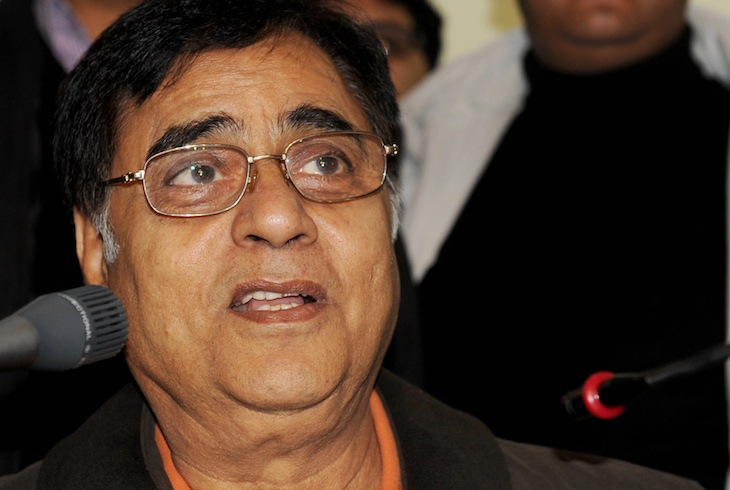As Classic FM celebrated its quarter-century on Wednesday with not a recording but a live broadcast of a concert from Dumfries House in Scotland — Bach, Mendelssohn, Chopin and Liszt, and the première of a specially commissioned work by the Welsh composer Paul Mealor — Radio 3 has upped the ante by announcing an autumn schedule that promises to be ‘an antidote to today’s often frenzied world’.
Its new programming ranges from a special opera season and a series of organ and choral music to ‘an immersive audio impression’ of what it feels like to hang vertically on the side of a mountain, wind whistling through the ears, feet teetering on the edge. Alan Davey’s mission as controller is to ensure that the BBC’s classical-music-and-words station retains its status as ‘a cultural powerhouse’ that both innovates and reaches a broader audience. It’s a bold initiative. How do you reach out and find new listeners? Will they be persuaded to tune in to ‘slow radio’, soundworks that force us to turn off the smartphone and to listen instead to the pulse of the moment, not rushing ahead for the next thing? How do you stretch the ears of the core audience, incorporating new sounds, different springs of thought, without alienating them?
Programmes such as Michael Berkeley’s Private Passions, the ever-so-straightforward-yet-surprisingly-effective format of inviting a chosen guest to talk about some of their favourite or most meaningful pieces of music, have always promised opportunities to discover new sounds or make surprising connections. This week, the Welsh poet and singer Gwyneth Glyn gave us Rimsky-Korsakov’s ‘The Sea and Sinbad’s Ship’ from Scheherazade but also a different Tchaikovsky from the usual tortured maestro of the symphonies with his intensely spiritual ‘Hymn to the Cherubim’ from the Russian Orthodox Liturgy of St John Chrysostom.
Even more surprising, though, was to discover that Welsh song and the Urdu tradition of the ghazal are not so far apart as you might think. Glyn was introduced to Indian music through Jagjit Singh, whose recordings for Bollywood films were often mastered in Wales. She finds connections between Singh’s intricately crafted love poems, infused with the pain of unrequited love, and the Welsh tradition of song, also saturated with longing and unfulfilled emotion.
First she gave us a traditional Welsh love song by the incredibly pure, delicate Welsh tenor from the 1960s, Meredydd Evans, and then a ghazal written and sung by Glyn with one of Singh’s pupils Tahseef Akhbar. One piece seemed to flow out of the other, in spite of their very different origins. When a ghazal from Singh himself followed, it was as if a slice of Urdu love poetry had emerged straight from music whose origins lie in the Welsh valleys. As Glyn explained, ‘the emotional experience of love is the same’, the music coming out of the same source.
Music lies at the heart of the Apollo Theater on 125th Street in Harlem, New York. In Where Stars Are Born: The Harlem Apollo on the World Service, Billy Mitchell, who has worked at the theatre since he was first employed there as a teenager running errands, took us through the history of this powerhouse of American song. Every Wednesday night since 1934 the stage at the Apollo has been open to those amateurs brave enough to face the audience, who would boo (from all 1,538 seats) if they didn’t like what they were hearing, but also throw cabbages, tomatoes, eggs, anything to hand, until the crestfallen performer retreated never to return. Those they did like, though, were given a standing ovation, and if they were really lucky the chance to appear again alongside resident performers, who would often be expected to appear five times a day, six days a week. The theatre attracted huge audiences who would stand in line from ten in the morning. If there were still people outside, another show would be put on. Billie Holiday, Ray Charles, Michael Jackson, Marvin Gaye, Martha Reeves, Ella Fitzgerald: the list of names discovered by the Apollo is stuffed with all-time favourites.
When Mary Wilson of the Supremes walked out on stage in 1963, she was terrified of the audience. They just stared at us, three cute girls, she recalled, and it took a couple of numbers before they started to clap. ‘We saw smiles,’ she said, and knew we had ‘won them over’. Conditions for the performers were not exactly comfortable. Wilson remembers tottering up six or seven flights of rickety stairs in her high heels to reach their dressing-room on the top floor (the higher they went, the lesser the star). Martha Reeves toasted hot dogs on a light bulb to save on food bills. They didn’t make much money because the expense of living in New York was extraordinary and they more or less lived in the theatre. ‘It was like being on a day trip with a lot of talented people,’ she said. James Brown, the ‘godfather of soul’, loved the Apollo so much that his 24-carat gold coffin was brought by limousine from his home in Georgia and installed on stage so that his fans could walk up and view his body.






Comments